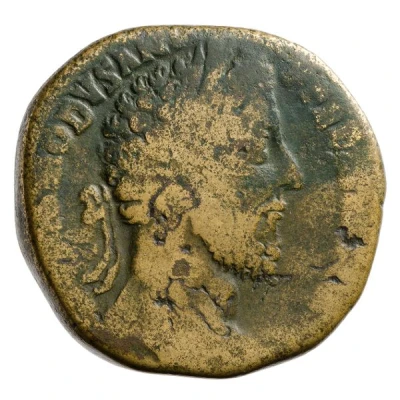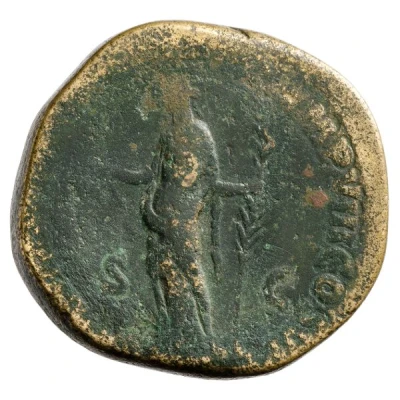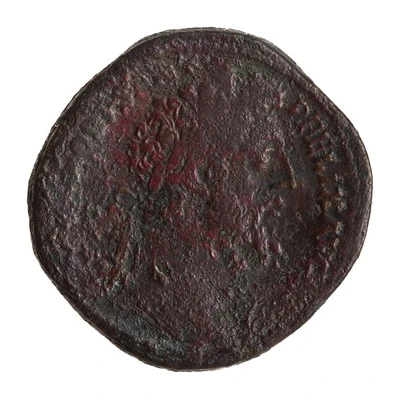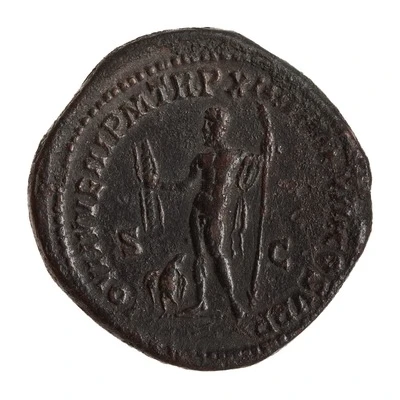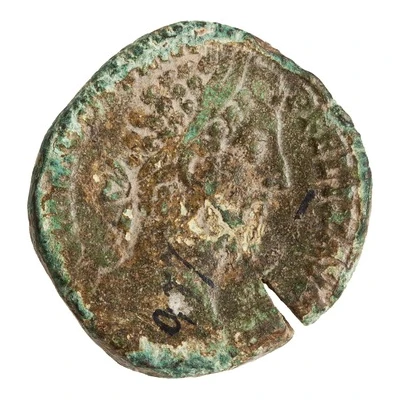
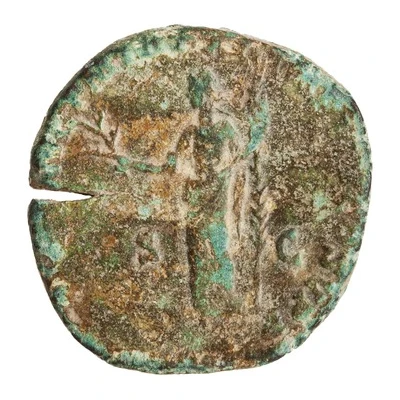

© American Numismatic Society (ANS)
Sestertius - Commodus HILARITAS AVG P M TR P XII IMP VIII COS V P P S C; Hilaritas
| Bronze | 23 g | 29 mm |
| Issuer | Rome › Roman Empire (27 BC - 395 AD) |
|---|---|
| Emperor | Commodus (Lucius Aurelius Commodus) (177-192) |
| Type | Standard circulation coin |
| Years | 186-187 |
| Value | 1 Sestertius = ¼ Denarius |
| Currency | Denarius, Reform of Augustus (27 BC – AD 215) |
| Composition | Bronze |
| Weight | 23 g |
| Diameter | 29 mm |
| Shape | Round (irregular) |
| Technique | Hammered |
| Demonetized | Yes |
| Updated | 2024-10-06 |
| Numista | N#265883 |
|---|---|
| Rarity index | 100% |
Reverse
Hilaritas, draped, standing left, holding branch in extended right hand and long palm, nearly vertical, in left hand.
Script: Latin
Lettering: HILARITAS AVG P M TR P XII IMP VIII COS V P P S C
Translation:
Hilaritas Augusti. Pontifex Maximus, Tribunicia Potestate Duoecima, Imperator Octavum, Consul Quintum, Pater Patriae. Senatus Consultum.
Joy of the emperor (Augustus), high priest, holder of tribunician power for the twelfth time, supreme commander (Imperator) for the eighth time, consul for the fifth time, father of the nation. Decree of the senate.
Comment
Mass varies: 19.42–27.57 g;Diameter varies: 28.5–29.36 mm;
Example of this type:
American Numismatic Society (ANS)
Source:
Online Coins of the Roman Empire (OCRE)
Interesting fact
The reverse side of the coin features the goddess Hilaritas, who is depicted standing left, holding a flower and a scepter. The image of Hilaritas was chosen to represent the concept of joy and happiness, which was an important aspect of Roman culture during the reign of Commodus. The coin's design was meant to promote the idea of a happy and prosperous Roman Empire, and it's an interesting example of how currency was used as a tool for propaganda and social control during ancient times.
